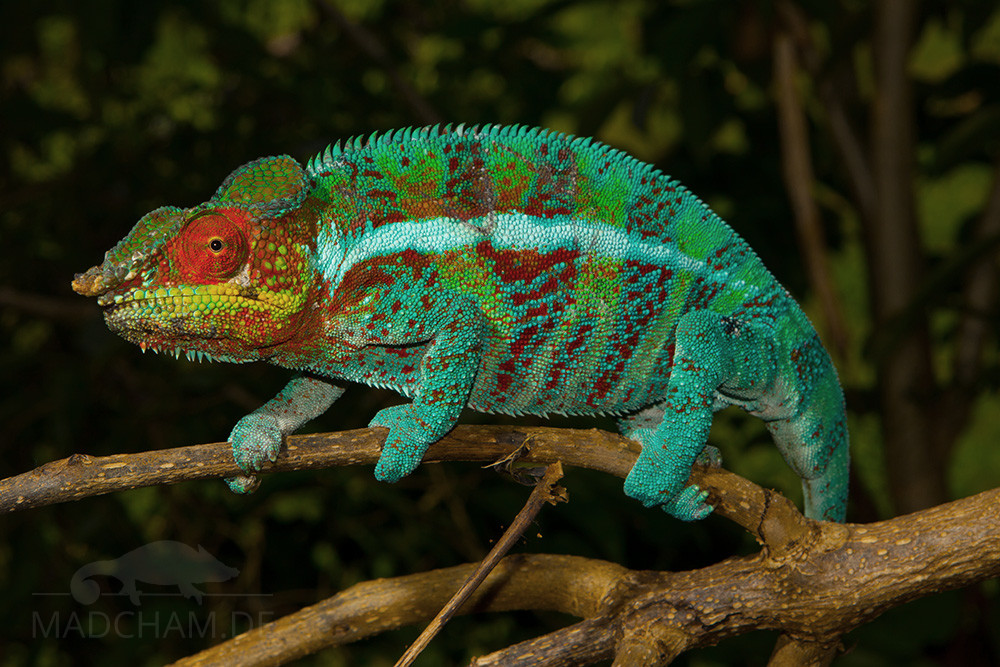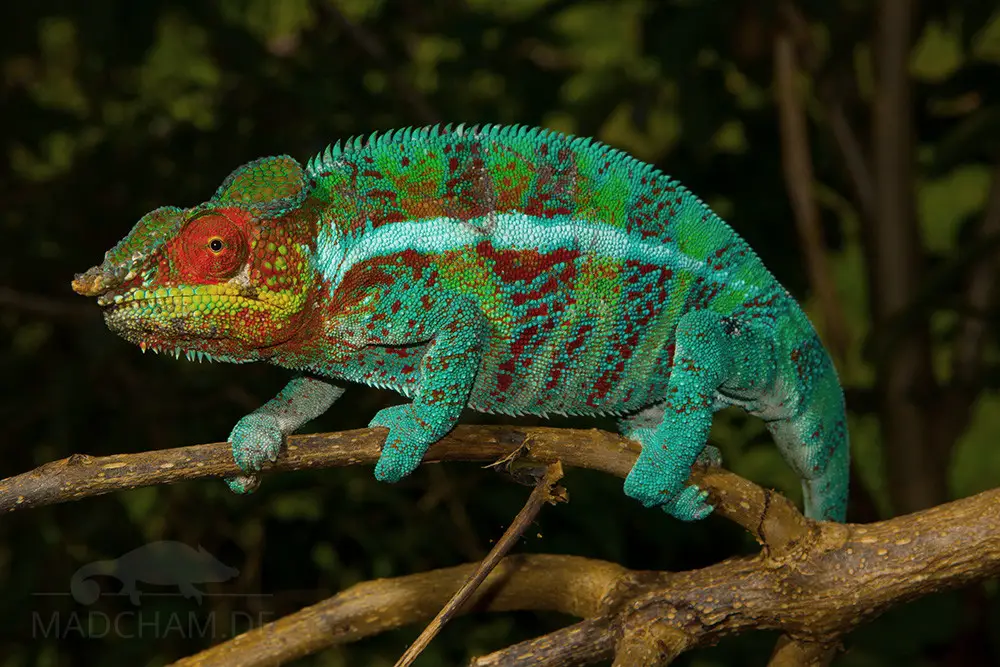Chameleons are often considered to be one of the most fascinating creatures in the animal kingdom due to their unique physical characteristics. One question that has puzzled scientists and animal enthusiasts alike is whether or not chameleons have a clavicle.
The clavicle, also known as the collarbone, is a bone that connects the sternum to the shoulder blade. While many animals have a clavicle, the answer as to whether chameleons have one or not is not so straightforward. In this article, we will explore the anatomy of chameleons and answer the intriguing question of whether or not they have a clavicle.
Chameleons are unique reptiles that have several distinctive features. One such feature is their lack of a clavicle bone. Unlike most other vertebrates, chameleons do not have a collarbone, which allows them to have a much greater range of motion in their shoulders. Instead, chameleons have a series of fused bones that provide support for their front limbs.

Do Chameleons Have a Clavicle?
Chameleons are fascinating creatures that are known for their ability to change color and blend into their surroundings. But have you ever wondered if they have a clavicle, commonly known as a collarbone? In this article, we will explore the anatomy of chameleons and answer this question.
What is a Clavicle?
The clavicle is a bone that connects the shoulder blade to the sternum. It is also known as the collarbone. The clavicle acts as a strut that supports the shoulder, allowing it to move freely. It also protects the underlying blood vessels and nerves that travel from the neck to the arm.
Anatomy of Chameleons
Chameleons have a unique skeletal structure that allows them to move and climb with ease. They have elongated limbs that are adapted for grasping branches and a prehensile tail that can wrap around objects. Chameleons also have a fused pelvic girdle that provides stability when walking and climbing.
Do Chameleons Have a Clavicle?
Unlike most other reptiles, chameleons do not have a clavicle. This is because their shoulder blades are not connected to the sternum. Instead, they have a series of muscles and tendons that attach the shoulder blades to the rest of the skeleton. This allows them to move their shoulders independently, giving them greater flexibility and range of motion.
Benefits of Not Having a Clavicle
While the lack of a clavicle may seem like a disadvantage, it actually provides some benefits for chameleons. Without a clavicle, they are able to move their shoulders in a wider range of motion, which is useful for climbing and grasping branches. Additionally, the absence of a clavicle allows them to swallow larger prey, as the flexible shoulder girdle can expand to accommodate larger food items.
Conclusion
In summary, chameleons do not have a clavicle. Their unique skeletal structure allows them to move and climb with ease, and the absence of a clavicle provides them with greater flexibility and range of motion. While it may seem like a disadvantage, it actually provides some benefits for these fascinating creatures.
Freequently Asked Questions
Do chameleons have a clavicle?
Chameleons are unique creatures that are known for their ability to change color. One of the most interesting things about chameleons is their skeletal structure. Unlike most other animals, chameleons do not have a clavicle. The clavicle is the bone that connects the shoulder blade to the sternum in humans and many other mammals. Chameleons have evolved without this bone, which gives them greater flexibility in their movements.
Despite the lack of a clavicle, chameleons are still able to move their limbs and walk on all fours. They have a unique skeletal structure that allows them to move their limbs independently of each other. This gives them the ability to climb and grasp onto branches and other objects with great precision.
Why don’t chameleons have a clavicle?
Chameleons have evolved without a clavicle as a way to adapt to their environment. Their unique skeletal structure allows them to move their limbs independently of each other, which gives them greater flexibility and range of motion. This is especially important for chameleons, as they are arboreal creatures that spend most of their time climbing trees and other objects.
The lack of a clavicle also allows chameleons to be more agile and nimble. They are able to move quickly and with great precision, which is necessary for catching prey and avoiding predators. Overall, the absence of a clavicle has been a beneficial adaptation for chameleons that has allowed them to thrive in their natural habitat.
What is the function of a clavicle?
The clavicle, also known as the collarbone, is an important bone in the human body and many other mammals. Its main function is to connect the shoulder blade to the sternum, which allows for greater stability and range of motion in the shoulder joint. It also serves as a point of attachment for several muscles that are important for arm and shoulder movement.
In addition to its functional role in movement, the clavicle also serves as a protective barrier for the underlying nerves and blood vessels. It helps to prevent injury to these structures during physical activity or trauma.
Are there any other animals that don’t have a clavicle?
Chameleons are not the only animals that have evolved without a clavicle. Some other examples include sloths, anteaters, and armadillos. These animals have adapted to their environment in different ways, and the absence of a clavicle is just one of many unique features that they possess.
Despite not having a clavicle, these animals are still able to move and function normally. They have adapted to their environment in a way that allows them to thrive, even without this important bone.
Can chameleons still move their arms without a clavicle?
Yes, chameleons are still able to move their arms without a clavicle. They have a unique skeletal structure that allows them to move their limbs independently of each other, which gives them greater flexibility and range of motion. This is especially important for chameleons, as they spend most of their time climbing trees and other objects.
While the clavicle serves an important function in many animals, chameleons have evolved without this bone and have adapted their skeletal structure to compensate. They are still able to move their arms and legs with great precision and agility, which is necessary for catching prey and avoiding predators.
How to water your chameleon | Humidity, misting, and hydration
In conclusion, the answer to the question “Do chameleons have a clavicle?” is not a straightforward one. While some species of chameleons do possess a clavicle, others do not. This bone, also known as the collarbone, serves as a crucial point of attachment for muscles in the shoulder area.
Despite the lack of a clavicle in certain chameleon species, these reptiles are still able to move their shoulders in a unique and fascinating way. Their flexible joints and specialized muscles allow them to rotate and grip branches with ease.
Overall, the study of chameleons and their skeletal structures continues to reveal new insights into the incredible adaptations of these animals. While some species may have a clavicle and others may not, all chameleons have evolved to thrive in their particular environments.


